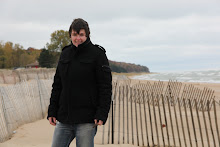
MISSION:
The mission of the Chicago Project for Violence Prevention is to: a) work with community and government partners to reduce violence in all forms; and, b) help design interventions required to better define what should be included in a community or city anti-violence plan.
HISTORY:
Formed in 1995, the Chicago Project takes a strategic public health approach to violence prevention. This approach has been employed to address and reduce other serious health threats, such as child mortality, heart disease, HIV/AIDS, smallpox, and polio. It includes a full commitment to a specific objective (in this case stopping shootings), the setting of long-term and short-term goals, strategy development based on best practices and adapted to the local situation by local practitioners, and a management structure that works at both the community and city/county levels. The public health approach relies heavily on public education to change attitudes and behaviors toward violence, outreach using individuals recruited from the target population, community involvement to change norms, and evaluation methods to monitor strategy.
The Chicago Project has formed partnerships with community-based organizations to develop comprehensive strategic plans for reducing violence. An Advisory Board and Steering Committee, comprising criminal justice, health, religious, and civic leaders, provide support for strategy development and leverage city and county resources for the project and its partners.
The project is supported by private foundation grants and with local, state, and federal funds. The project is housed at the School of Public Health at the University of Illinois at Chicago.
To accomplish its mission of preventing violence, the Chicago Project initially developed a plan and built an organizational structure to provide technical assistance and support for a comprehensive and community-based effort to reduce and prevent violence.
Eventually, through discussions with community partners, crime experts, and representatives from a cross-section of government agencies, the Chicago Project's steering committee developed an 8-Point Plan for reducing violence. CeaseFire, which emerged after five years of development and field testing of various pieces of a violence reduction strategy, brings to life key elements of the 8-Point Plan. Its focus is street violence, particularly shootings and killings.
CeaseFire was adapted from the best violence reduction work of several cities — notably Boston , which had extraordinary successes in the 1990s — and the best research of public health of the last several decades. After reviewing gang violence reduction projects initiated and evaluated by the US Department of Justice and lessons emerging from the Project on Human Development in Chicago Neighborhoods and mindful of the public health approach discussed earlier, the Chicago Project added the community and public education components to its violence reduction initiative.
After a year of needs assessment, planning, and building collaborative relationships at the local level, CeaseFire was formally launched in early 2000 with outreach workers in the West Garfield Park neighborhood of Chicago. Police Beat 1115 was chosen as the first CeaseFire zone in large part because of the high number of shootings. In the first year of CeaseFire, shootings in beat 1115 dropped by 67%.
By the beginning of 2006 CeaseFire was either established or in the process of being implemented in 15 neighborhoods in the city and at sites in five other cities in Illinois.
Watch this video on CeaseFire's approaches and effectiveness:
Find out more about this great program here



No comments:
Post a Comment